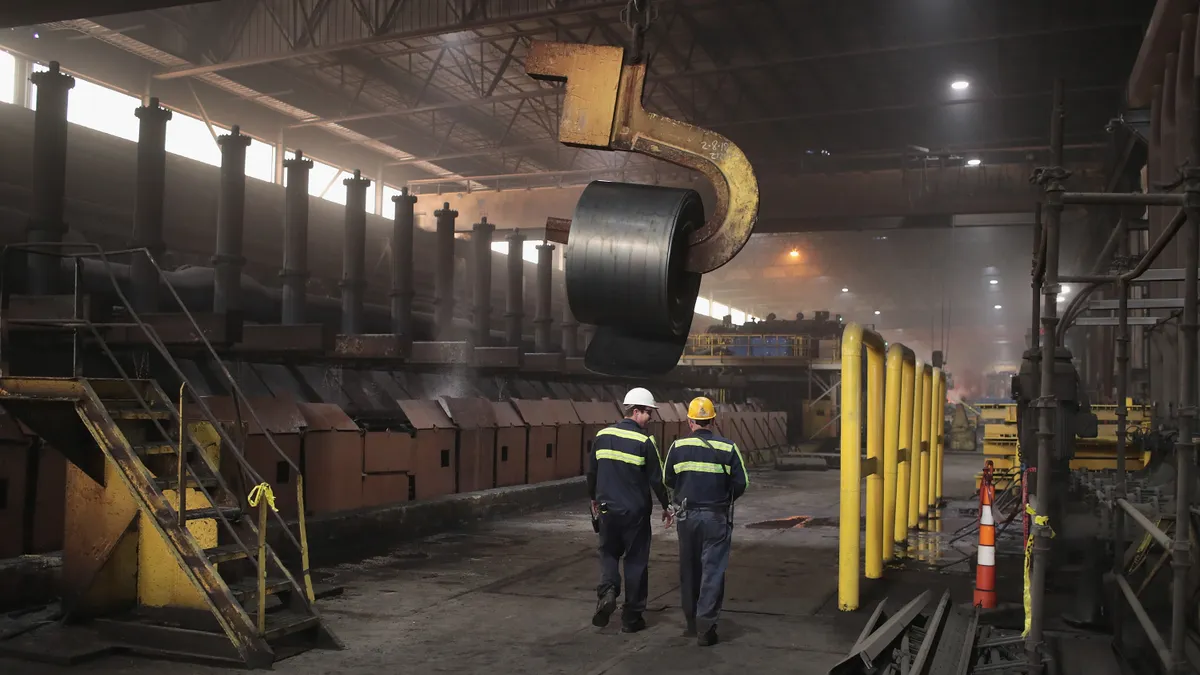Dive Brief:
- Manufacturers during the next 12 months said they plan to increase wages and full-time employment by 3.5% and 3.8%, respectively — record rates in quarterly surveys dating to 1997, according to the National Association of Manufacturers. They expect to push up capital spending by 3.6%, the highest increase since 2018.
- "Manufacturers are continuing to invest in their companies — both in workers and in capital — at paces that would indicate an extremely positive outlook in their business moving into next year," said NAM, referring to a survey conducted between Aug. 10 and Aug. 30.
- The companies see workforce shortages as their biggest risk, followed by supply chain disruptions, rising cost pressures and increasing coronavirus cases, the association said.
Dive Insight:
Employers making final decisions about pay levels for 2022 confront big challenges in hiring and retention from one of the tightest labor markets in decades.
The number of U.S. job openings rose to a record high of 10.9 million at the end of July, U.S. Bureau of Labor Statistics reported on Sept. 8, as the highly contagious delta variant of COVID-19 discouraged many workers from employment. BLS has tracked information dating back to 2000.
Headwinds to hiring and retention will probably persist into next year, according to a survey of 380 U.S. and Canadian companies last month by Willis Towers Watson.
Nearly three out of four employers (73%) said they have trouble attracting employees, an increase from 26% last year and 56% during the first six months of this year, according to the WTW survey. Three out of five employers have a hard time retaining workers, an increase from 15% last year.
The tight labor market and wage gains may increase inflationary pressure, according to warnings by some economists, including former Treasury Secretary Lawrence Summers.
Record monetary and fiscal stimulus, supply chain bottlenecks and a rebound in post-lockdown economic growth have pushed up prices in recent months. Consumer prices rose 0.5% in July for a 5.4% annual rate.
Manufacturers identified rising prices for raw materials as their top "primary business" challenge, predicting input costs will rise 6.5% during the next 12 months, NAM said.
Federal Reserve Chairman Jerome Powell and other policymakers have forecast that inflation will gradually ease as the economy overcomes disruptions from the pandemic.
Manufacturers identified as their second-biggest obstacle the inability to attract and retain a quality workforce, NAM said.
Although gross domestic product and manufacturing production exceed pre-pandemic levels, "significant challenges remain," the association said. The delta variant "is spreading rapidly in many markets, resulting in renewed restrictions and dampening activity."
Manufacturers account for 11.4% of total U.S. output and employ 8.5% of the workforce, according to NAM, which has 14,000 members.













